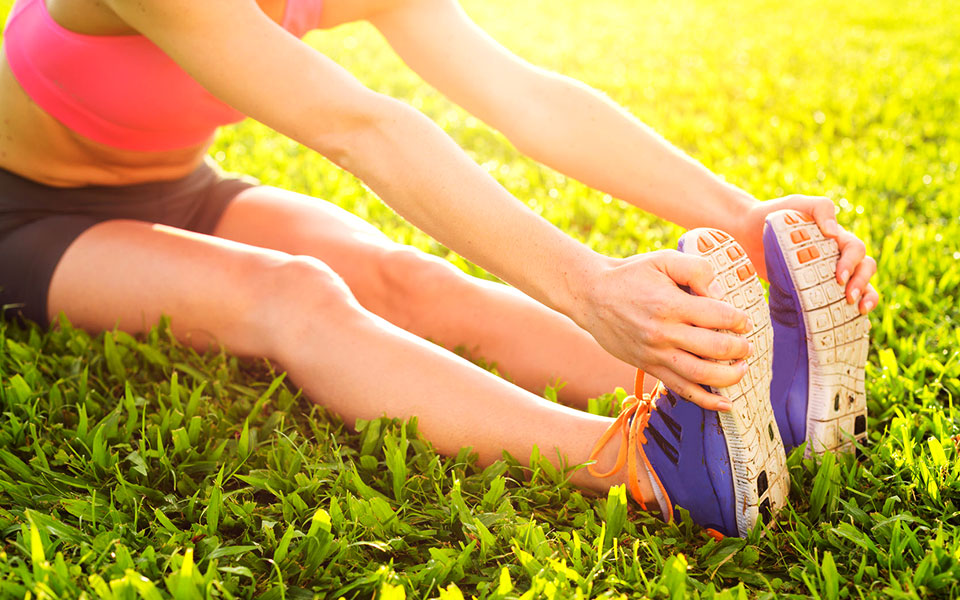Running is both an exciting sport and a fantastic way to stay in shape. There are many differing opinions when it comes to techniques and gear regarding running, some more factual than others. Some ideas about running, however, are nothing but myths that do not stand up to scrutiny at all. If you want to enjoy the many benefits of running, it’s important to be able to distinguish reality from fantasy. In this article, we’ll be exploring some of the strangest yet most enduring myths and taboos that surround the sport of running.
1. Running Barefoot Will Reduce Injuries
This is a myth that is not entirely without foundation, but it’s still one that’s dangerous for most people to accept without question. This idea recently gained popularity due to a book called Born to Run, by Christopher McDougall, which highlights the amazing Tarahumara Indians of Mexico who indeed run long distances barefoot. However, it’s very different for modern people who have been wearing shoes all of their lives to suddenly start running barefoot. This often leads to serious injuries. Not only do traditional tribes have the advantage of running barefoot from an early age, they usually run in natural settings. If you run outdoors, you may encounter hazardous debris such as broken glass.
Modern research does not dictate that barefoot running, also known as minimalist running, should be strictly avoided. However, if you want to try it, it’s important to get your feet accustomed to it gradually. Otherwise, it’s likely to do more harm than good.
2. It’s Essential to Stretch Before Running
The idea of stretching before running is so deeply ingrained in many peoples’ minds that it’s hard to imagine that it could be a myth. The truth, however, is that stretching before a run could actually increase your chances of getting injured. Stretching is not bad for you, but it’s not the ideal way to exercise cold muscles. You are better off getting warmed up by walking or jogging at a slow pace. If you want to stretch for flexibility, the best time to do so is after a warmup or even after your run.

3. Running is the Only Exercise You Need
As beneficial as running is, you shouldn’t buy into the myth that it’s the only form of exercise that you need. In fact, if you only run and don’t do any type of strength training, you are making yourself vulnerable to certain types of injuries.
Not that long ago, there was a great divide between people who focused on cardio type exercise such as running and those who were involved in weightlifting and other types of strength training. Now, however, we know that lifting weights supports strong bones as well as muscle mass. These are extremely important for people who do a lot of running.
4. Running is Bad For Your Knees and Joints
This is a common myth that may also be categorised as a great excuse for people looking for a reason not to run. The idea that running is bad for your knees and other joints is simply not supported by evidence. One reason for this belief is that runners, like all athletes, do indeed suffer occasional injuries that affect their joints. This does not mean, however, that running is bad for the long term health of your joints. It turns out that just the opposite is true. Research shows that running actually reduces your chances of developing osteoarthritis and hip replacement risk.
5. You’re Too Old to Start Running
In a society that’s largely youth-obsessed, it’s understandable that many of us would think that after the age of, say, 30, 40, 50 or even 65, it’s too late to start running. This, however, is yet another myth that is refuted every day by older runners who didn’t start until middle age or later.
In one study published in the British Journal of Sports Medicine, it was discovered that people over the age of 60 who began a program of regular exercise were able to age in a healthier manner than those who were inactive. Running can actually help you maintain your health as you get older.
6. Running Shoes Should be Replaced Every Six Months
The notion that running shoes should be replaced at least every six months is a figure often repeated and it’s one that certainly serves the interests of running shoe companies. However, it’s not something you should take literally. What really matters is the condition of your running shoes. A good general rule is to replace your running shoes every 650-850 kilometres, but this depends on the terrain you cover.
Your running shoes will obviously last a lot longer if you run on a pristine treadmill at home or at the gym than if you’re running up dusty trails in the mountains. In short, the only way to tell if you need new running shoes is to examine them. A good clue to worn out shoes is that the midsoles show compression wrinkles. Another sign is that your feet suddenly feel more sore than usual after you run. You should also practice proper shoes care and maintenance so your shoes can last longer.
7. You Need Sports Drinks to Stay Hydrated
Sports or energy drinks can be useful if you’re running for a long time, such as over an hour. In this case, a sports drink helps you replace electrolytes and calories that you have burned up while running. However, for shorter runs you are better off with plain water. Water is also the best choice for burning fat, as many sports drinks contain carbohydrates. This is necessary to keep you energized for long and strenuous runs, but not for running a few kilometres or less.
8. Carb Loading is Essential When You Run
The rule for carb loading is similar to that of sports drinks. The difference is that eating a large portion of pasta or other carbs should only be done for extremely strenuous sporting events, such as a marathon. Even then, you don’t want to do it immediately before the event but in the days leading up to it. In fact, you should eat normally the day before a race or it could slow you down or even upset your stomach. For normal training purposes, there’s no need to carb load at all, though you should always include some healthy carbs in your daily diet.

9. Running Every Single Day is Good For You
Like any type of exercise, you will get the best results from running if you allow your body time to recover. Running every single day might feel good for a while, but it can actually slow down your long term progress if you over-train. There is also an increased likelihood of getting injured. Your particular schedule depends on many factors, but for most people running three or four days per week is sufficient. You can do other types of exercise, such as swimming, bicycling or weight lifting, on other days. It’s a good idea to take at least one full day per week off from all types of exercise, though.
10. You Must Run Fast to Really Benefit From Running
This is a myth that can discourage older or less fit people from taking up running. The great thing about this sport is that it’s adaptable to your current level of endurance. Fast for one person may be moderate or even slow for another. Yet you will reap the cardiovascular and other benefits running at your own pace, whatever that may be. You may speed up with practice, but running at any speed is healthy and certainly better for you than not running at all!
11. Taking a Break Will Ruin All Your Progress
People who run often fear that taking a few days off will undermine all of their gains. The truth is, if you miss up to five days of running you will probably not notice any substantial differences when you return to the grind. Even if you stop for a longer period of time, whether due to illness, injury, vacation or simply lack of motivation, this doesn’t mean you’ve lost all of your progress. When you resume running, you’ll still be able to get back to your old level of conditioning within a few weeks.
12. You Must Look Like a Runner to Run
When people think of a marathon runner, they usually picture someone who is thin and long-limbed. While some runners fit this stereotype, others don’t. You should not let your current appearance or natural body type discourage you from running. Keep in mind also that, over time, running will change your body. Yet no matter what you look like, there’s no reason why you can’t enjoy the benefits of this great form of exercise.
13. Caffeine is Dehydrating
Recent research has shown that caffeine can boost performance with many types of exercise, including running. The old belief that caffeine should be avoided by athletes because it has a dehydrating effect turns out to be a myth. In one study of 50 men, for example, it was found that drinking coffee is not significantly different from drinking water when it comes to hydration. This doesn’t mean, of course, that you should overdo it with caffeine, as it can cause other side effects such as nervousness or insomnia. A cup of coffee before running or other exercise, however, can be beneficial.

14. Expensive Running Shoes Help Prevent Injuries
While it might seem logical that paying a lot for your running shoes will help protect your feet, this isn’t necessarily the case. Many athletic shoes, for example, feature cushioning as a way to reduce heel and other foot injuries. Yet there is no scientific evidence that this type of shoe is actually effective when it comes to preventing injuries. If you prefer fancy running shoes, you should buy them. Don’t expect, however, that they offer any type of special protection. You are better off focusing on developing good form when you run.
15. You Can’t Drink Too Many Fluids When Running
The importance of hydration is now emphasized by trainers and health experts. The problem is, some people take it too far and believe that you can’t drink too much water. The fact is, drinking too many fluids can cause problems such as reducing the level of sodium in your body to an unhealthy degree. There is even a name for this condition – hyponatremia. Most people don’t have to worry about this if they simply replenish fluids in a normal manner. The point is that you shouldn’t force yourself to gulp down water or sports drinks beyond your comfort level.
Myth Buster
The more we learn about running and exercise, the more easily we’ll be able to tell the difference between myths and facts about running. To some extent, you have to rely on common sense and your own experiences. On the other hand, you should also listen to experts and keep up with the latest research. Running is a healthy and invigorating activity and the more you know about it, the more you can benefit from it.
What are some of the weird running myths that you have heard before?




